| |
|
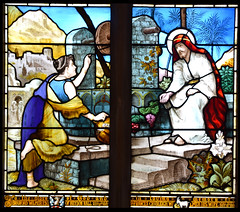 |
|
Reydon is a suburb of
Southwold. In terms of population, they are about
the same size. But which one of the two have you
heard of? Precisely. Reydon is agri-industrial,
and when you cross over the river from one parish
to the other, the houses double in price. Not so
long ago, a beach hut changed hands in Southwold
for £100,000. And yet, Reydon was here first. As
with Felixstowe and Walton, Southwold was the
fishing hamlet in Reydon parish that grew to
become a town. Southwold's early medieval church
was a chapel of ease to Reydon church, and while
it has since been rebuilt in spectacular style,
there is still enough older work surviving at
Reydon to give an idea of the mother church that
early Southwolders knew.
St Margaret sits away from the houses, on the
road towards Wangford, anonymously pretty in a
wide churchyard. Its basic early 14th Century
structure underwent a serious tarting-up in the
15th century, with the acquisition of
perpendicular windows. In the churchyard wall
there is a surviving mounting block, so that the
gentry could climb straight onto their horses
from the churchyard without descending to the
muddy road, and a boot scraper beside the porch
dated 1793. |
The attractive 1980s extension on
the north side of the nave was by Andrew Anderson. The
graveyard sprawls to north and east, but the most
striking memorial is probably the 1920s bronze angel to
the south of the chancel. The work of Paul Mountford, the
memorial remembers Fanny Watts, and was commissioned by
her husband Leonard. The angel prepares to soar
heavenwards, while on his pedestal Leonard Watts and the
allegorical figure of Grief lean in heavy despair.
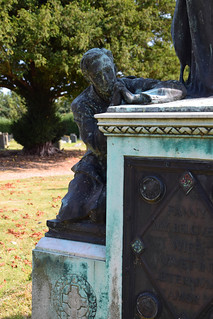 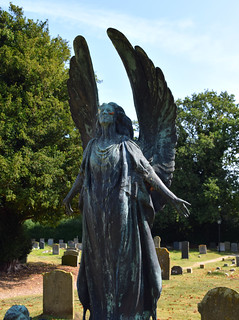 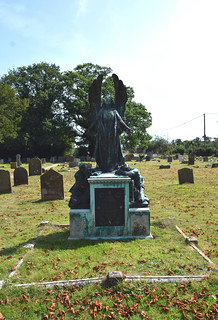
You step into a clean,
bright, neatly-kept interior, perhaps a bit smaller than
might be expected from the outside. I'd last visited on a
gloomy late afternoon in 2002, and had remembered the
church as still bearing all the hallmarks of the
enthusiastic Victorians who re-ritualised it in the
1870s. The organ had been moved away from the north-west
corner of the nave when the extension was built, and
placed unhappily up in the chancel, blocking a view of
the east end. But this has now gone, and in the light of
a summer's day the church has a feeling of great
simplicity and space. The font is set in the brick floor
beneath the tower, and the Queen Anne royal arms above
the south doorway are one of the best sets in Suffolk.
| There is an image niche in
the eastern splay of each window, one with a
lovely modern Blessed Virgin and Child statue in
it. The clear glass of the nave windows lead the
eye east to the colours of the chancel, with
their 19th and early 20th Century stained glass.
The best is the window on the north side of the
chancel by A L Moore, depicting Christ meeting
the Samaritan woman at the well. Moore depicts
her in a blowsy, opulent fashion, as if to
suggest to us that she really has had six
husbands, and that she's not married to the one
she's with at the minute. The glass opposite, of the Risen
Christ flanked by St Peter and St John, is by
Henry Hughes, early 20th Century and also good of
its kind. The 1860s window of Christ raising
Lazarus from the dead and the three Marys meeting
the angel at the empty tomb may be by Heaton,
Butler & Bayne. Less good is the east window,
a Ward & Hughes 'trampolining Jesus'
Ascension scene rejigged with a clear glass
background by the King Workshop in the modern
era. But all in all, an attractive grouping which
tops off this pleasing little church very nicely.
|
|
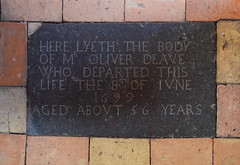 |
|
|
|